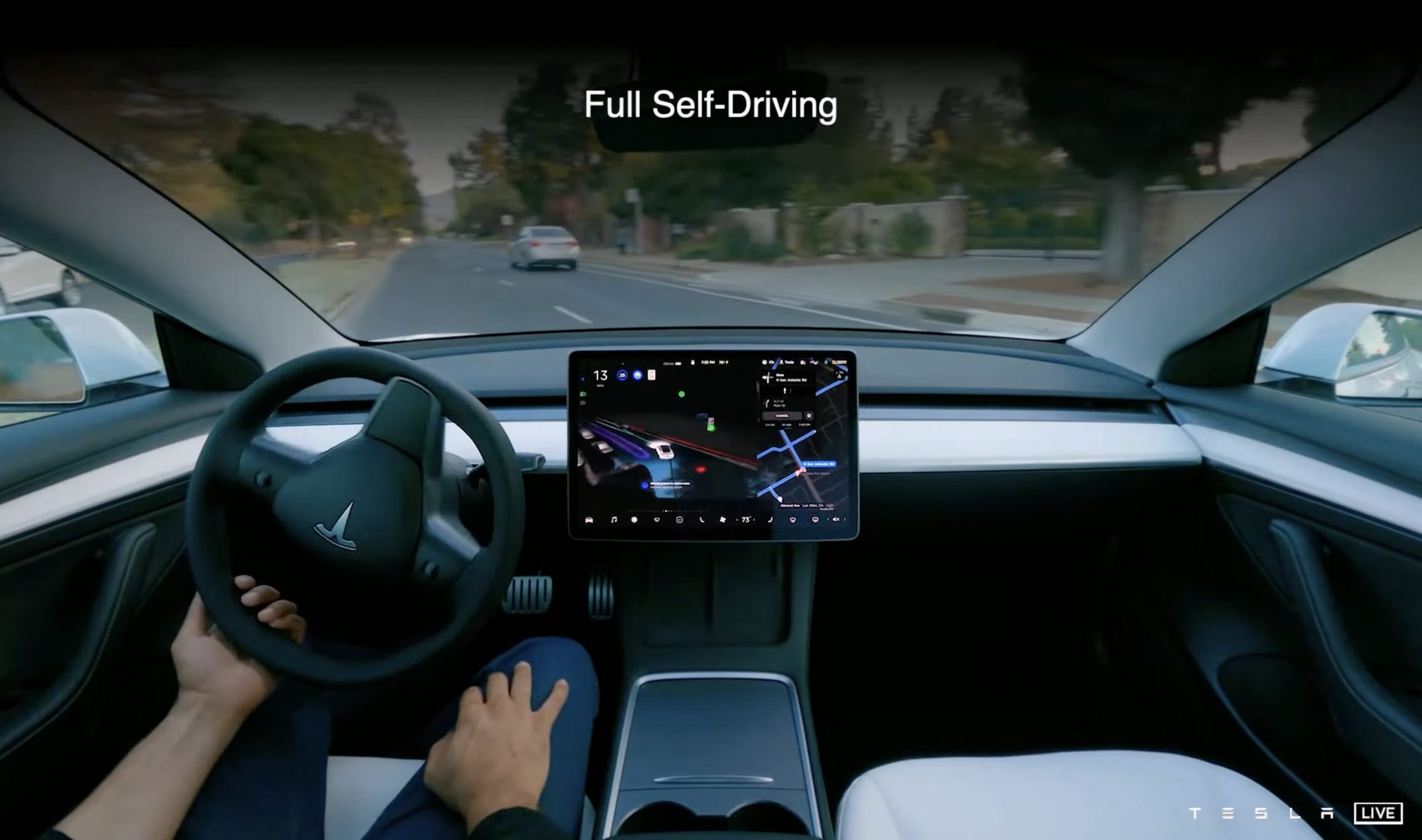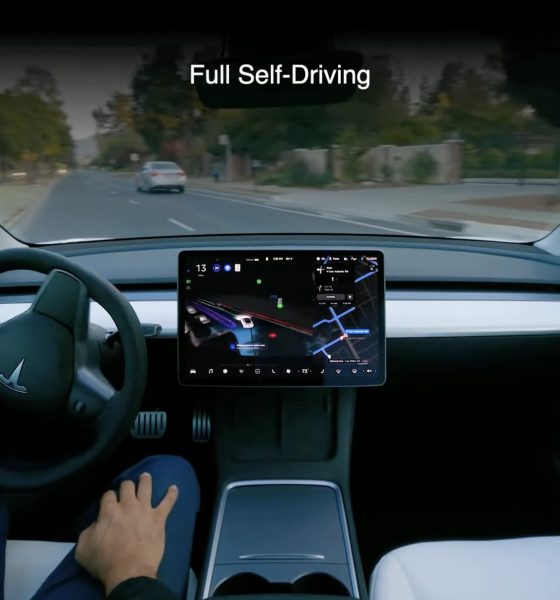Tesla’s Safety Score Beta program, which assesses Tesla drivers on their driving behavior using set metics, will eventually be able to predict crash probability pretty accurately, company CEO Elon Musk said.
Earlier this week, Teslarati questioned the basis of the Safety Score Beta and whether Tesla should outline its terms more broadly to avoid confusion among drivers. Unfortunately, some owners have reported that their scores have been docked several points due to their own safety measures and what they felt comfortable with when confronted with certain situations. However, although some examples were relatively conservative and passive and would be considered “safe,” the Safety Score program reduced their score.
Tesla introduces Safety Score (Beta) system that incentivizes safe driving
The reduction of a Safety Score effectively disqualified several drivers from qualifying for entrance into Tesla’s Full Self-Driving Beta program. Weeks ago, Musk indicated that Tesla would be expanding its FSD Beta fleet and would be adding drivers based on their Safety Score. After the Safety Score rolled out, it was revealed that Tesla would grade drivers on five set metrics: Forward Collision Warnings per 1,000 miles, Hard Braking frequency, Aggressive Turning, Unsafe Following, and Forced Autopilot Disengagements.
Tesla calculates the Safety Score by using a Predicted Collision Frequency formula, determining how safe the driver’s behaviors are behind the wheel. 100 is the highest score an owner can achieve.
Eventually, the Safety Score Beta will be utilized by Tesla for more than just to determine which drivers are deserving of being in the elusive FSD Beta tester group. Tesla Insurance will use the Safety Score to eventually determine driver insurance rates. The company’s insurance program could launch as soon as this month in Texas, with New York also in the running to receive Tesla Insurance sometime next year.
With such weight placed on the accuracy of the Safety Score Beta program, as a driver’s insurance rates will be determined by their grade, some owners are interested in whether Tesla is planning to further refine the Safety Score Beta. Musk detailed Tesla’s plans for it this morning on Twitter and said it will eventually be refined “until it is an extremely good predictor of crash probability.”
Definitely further refinements coming to (early beta) safety test score. It will be refined continuously until it is an extremely good predictor of crash probability. Exciting actuarial problem!
— Elon Musk (@elonmusk) October 7, 2021
Tesla’s newest update to FSD Beta will roll out tomorrow, and only around 1,000 drivers will be added to the Beta fleet. Musk stated that anyone with a perfect 100 Safety Score would receive access to the Beta program, effective as soon as Software Version 10.2 rolls out sometime on Friday.
Don’t hesitate to contact us with tips! Email us at tips@teslarati.com, or you can email me directly at joey@teslarati.com.9

News
Elon Musk’s Grokipedia surges to 5.6M articles, almost 79% of English Wikipedia
The explosive growth marks a major milestone for the AI-powered online encyclopedia, which was launched by Elon Musk’s xAI just months ago.

Elon Musk’s Grokipedia has grown to an impressive 5,615,201 articles as of today, closing in on 79% of the English Wikipedia’s current total of 7,119,376 articles.
The explosive growth marks a major milestone for the AI-powered online encyclopedia, which was launched by Elon Musk’s xAI just months ago. Needless to say, it would only be a matter of time before Grokipedia exceeds English Wikipedia in sheer volume.
Grokipedia’s rapid growth
xAI’s vision for Grokipedia emphasizes neutrality, while Grok’s reasoning capabilities allow for fast drafting and fact-checking. When Elon Musk announced the initiative in late September 2025, he noted that Grokipedia would be an improvement to Wikipedia because it would be designed to avoid bias.
At the time, Musk noted that Grokipedia “is a necessary step towards the xAI goal of understanding the Universe.”
Grokipedia was launched in late October, and while xAI was careful to list it only as Version 0.1 at the time, the online encyclopedia immediately earned praise. Wikipedia co-founder Larry Sanger highlighted the project’s innovative approach, noting how it leverages AI to fill knowledge gaps and enable rapid updates. Netizens also observed how Grokipedia tends to present articles in a more objective manner compared to Wikipedia, which is edited by humans.
Elon Musk’s ambitious plans
With 5,615,201 total articles, Grokipedia has now grown to almost 79% of English Wikipedia’s article base. This is incredibly quick, though Grokipedia remains text-only for now. xAI, for its part, has now updated the online encyclopedia’s iteration to v0.2.
Elon Musk has shared bold ideas for Grokipedia, including sending a record of the entire knowledge base to space as part of xAI’s mission to preserve and expand human understanding. At some point, Musk stated that Grokipedia will be renamed to Encyclopedia Galactica, and it will be sent to the cosmos.
“When Grokipedia is good enough (long way to go), we will change the name to Encyclopedia Galactica. It will be an open source distillation of all knowledge, including audio, images and video. Join xAI to help build the sci-fi version of the Library of Alexandria!” Musk wrote, adding in a later post that “Copies will be etched in stone and sent to the Moon, Mars and beyond. This time, it will not be lost.”
News
Tesla Model 3 becomes Netherlands’ best-selling used EV in 2025
More than one in ten second-hand electric cars sold in the country last year was a Tesla Model 3.

The Tesla Model 3 became the most popular used electric car in the Netherlands in 2025, cementing its dominance well beyond the country’s new-car market.
After years at the top of Dutch EV sales charts, the Model 3 now leads the country’s second-hand EV market by a wide margin, as record used-car purchases pushed electric vehicles further into the mainstream.
Model 3 takes a commanding lead
The Netherlands recorded more than 2.1 million used car sales last year, the highest level on record. Of those, roughly 4.8%, or about 102,000 vehicles, were electric. Within that growing segment, the Tesla Model 3 stood far ahead of its competitors.
In 2025 alone, 11,338 used Model 3s changed hands, giving the car an 11.1% share of the country’s entire used EV market. That means more than one in ten second-hand electric cars sold in the country last year was a Tesla Model 3, Auto Week Netherlands reported. The scale of its lead is striking: the gap between the Model 3 and the second-place finisher, the Volkswagen ID3, is more than 6,700 vehicles.
Rivals trail as residual values shape rankings
The Volkswagen ID.3 ranked a distant second, with 4,595 used units sold and a 4.5% market share. Close behind was the Audi e-tron, which placed third with 4,236 registrations. As noted by Auto Week Netherlands, relatively low residual values likely boosted the e-tron’s appeal in the used market, despite its higher original price.
Other strong performers included the Kia Niro, the Tesla Model Y, and the Hyundai Kona, highlighting continued demand for compact and midsize electric vehicles with proven range and reliability. No other model, however, came close to matching the Model 3’s scale or market presence.
News
Tesla Model Y Standard Long Range RWD launches in Europe
The update was announced by Tesla Europe & Middle East in a post on its official social media account on X.

Tesla has expanded the Model Y lineup in Europe with the introduction of the Standard Long Range RWD variant, which offers an impressive 657 km of WLTP range.
The update was announced by Tesla Europe & Middle East in a post on its official social media account on X.
Model Y Standard Long Range RWD Details
Tesla Europe & Middle East highlighted some of the Model Y Standard Long Range RWD’s most notable specs, from its 657 km of WLTP range to its 2,118 liters of cargo volume. More importantly, Tesla also noted that the newly released variant only consumes 12.7 kWh per 100 km, making it the most efficient Model Y to date.
The Model Y Standard provides a lower entry point for consumers who wish to enter the Tesla ecosystem at the lowest possible price. While the Model 3 Standard is still more affordable, some consumers might prefer the Model Y Standard due to its larger size and crossover form factor. The fact that the Model Y Standard is equipped with Tesla’s AI4 computer also makes it ready for FSD’s eventual rollout to the region.
Top Gear’s Model Y Standard review
Top Gear‘s recent review of the Tesla Model Y Standard highlighted some of the vehicle’s most notable features, such as its impressive real-world range, stellar infotainment system, and spacious interior. As per the publication, the Model Y Standard still retains a lot of what makes Tesla’s vehicles well-rounded, even if it’s been equipped with a simplified interior.
Top Gear compared the Model Y Standard to its rivals in the same segment. “The introduction of the Standard trim brings the Model Y in line with the entry price of most of its closest competition. In fact, it’s actually cheaper than a Peugeot e-3008 and costs £5k less than an entry-level Audi Q4 e-tron. It also makes the Ford Mustang Mach-E look a little short with its higher entry price and worse range,” the publication wrote.










